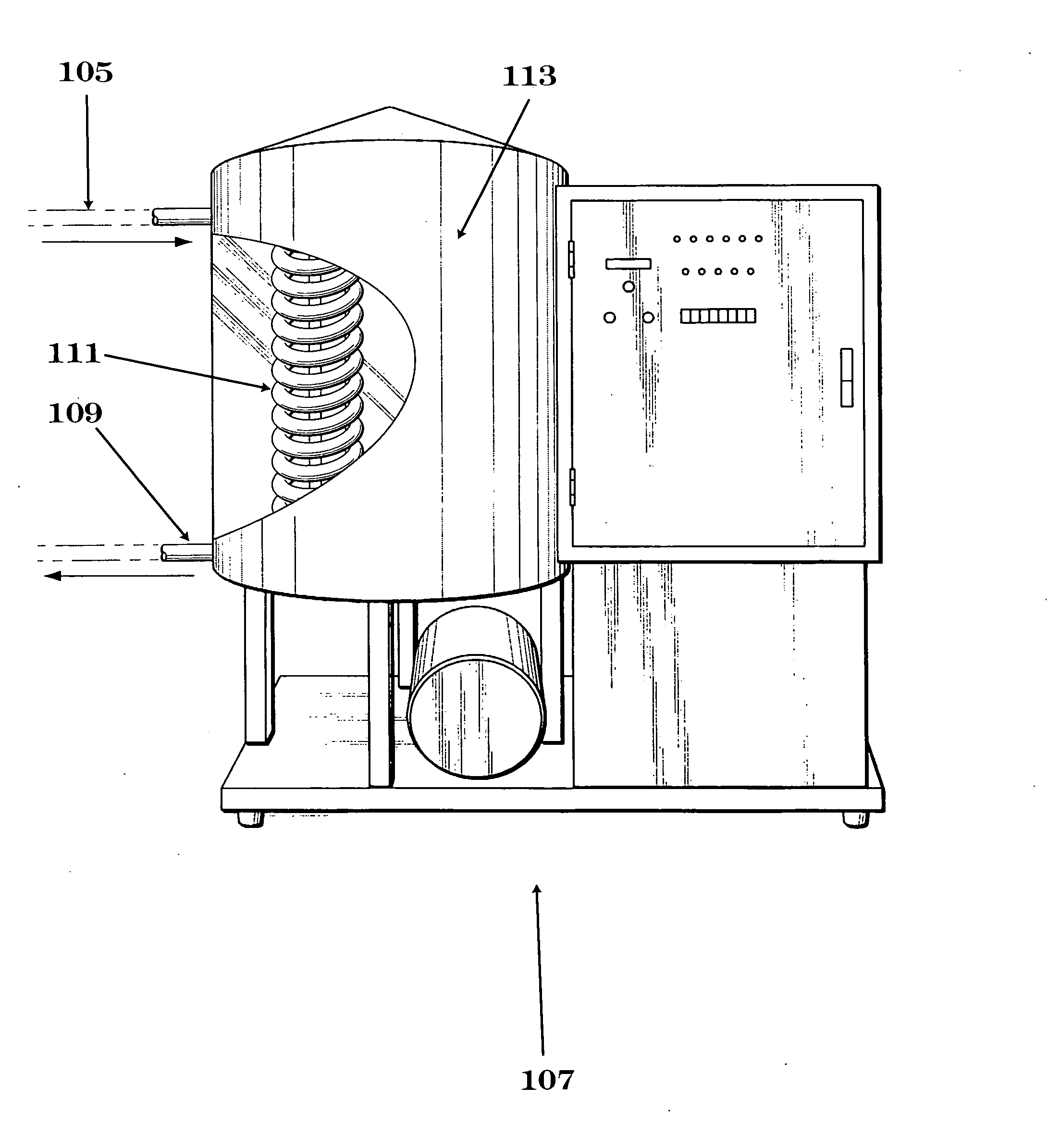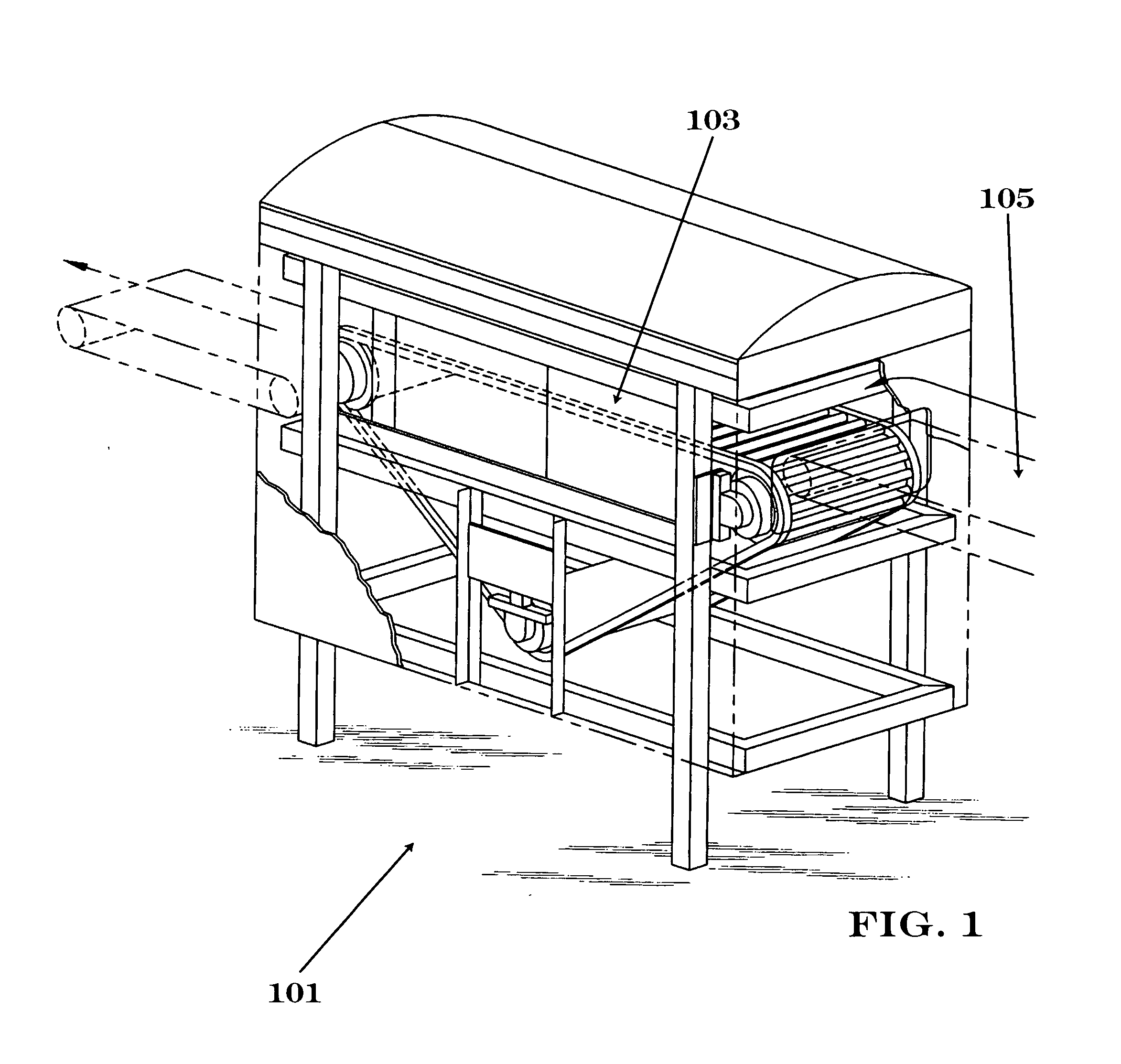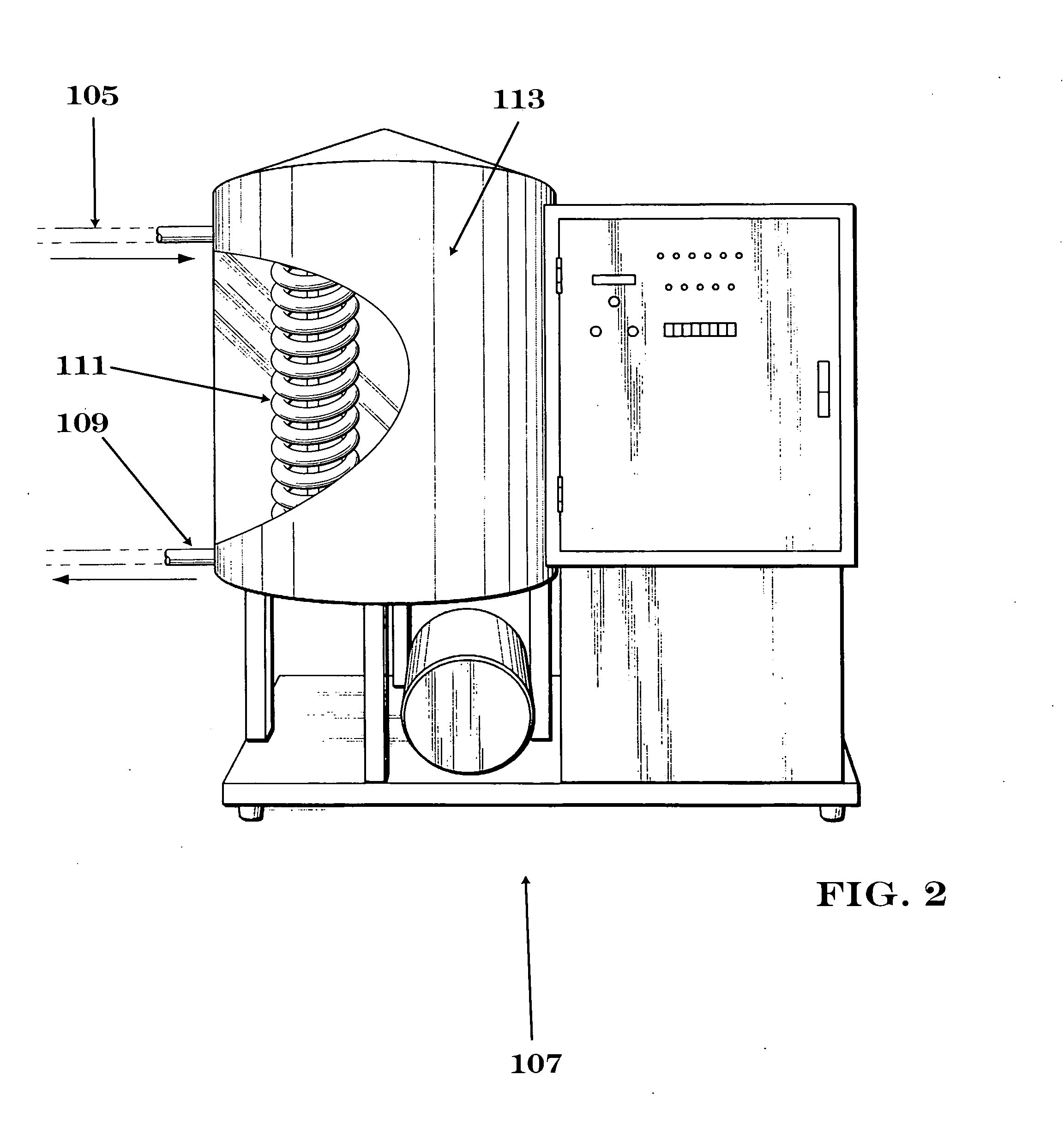Apparatus and method for inline solid, semisolid, or liquid antimicrobial treatment
a technology of liquid antimicrobial treatment and inline solids, which is applied in the direction of water installations, disinfection, construction, etc., can solve the problems of substantially disrupting ultrasonic destruction or substantially destroying the cellular integrity of relevant microorganisms, etc., and achieves the reduction of the amount of heat applied, the effect of reducing the amount of radiated heat generated by the process and reducing the population of microorganism
- Summary
- Abstract
- Description
- Claims
- Application Information
AI Technical Summary
Benefits of technology
Problems solved by technology
Method used
Image
Examples
example
[0086]This example is intended to illustrate the flexibility with which the several embodiments of the invention may be deployed in a typical food transport system, and is not intended to limit the scope of the invention to the precise steps or order which follow. In a typical industrial food processing plant that utilizes meat emulsions, large chunks of meat enter the facility and are butchered to remove choice cuts of meat. The butchering stage typically takes place in a cool but not cold environment in which microbes may nonetheless grow, and butchering exposes additional surface area of the meat to microbes. Lesser choice cuts of meat are placed on a conveyor system to transport the meat cuts to a different area of the processing plant for grinding. Before reaching the grinder, the meat cuts are directed along the conveyor system through a first IAMD that treats against microbe contamination, for example, the seventh preferred embodiment, which subjects the meat cuts to an effec...
PUM
| Property | Measurement | Unit |
|---|---|---|
| frequency | aaaaa | aaaaa |
| frequency | aaaaa | aaaaa |
| wavelength | aaaaa | aaaaa |
Abstract
Description
Claims
Application Information
 Login to View More
Login to View More - R&D
- Intellectual Property
- Life Sciences
- Materials
- Tech Scout
- Unparalleled Data Quality
- Higher Quality Content
- 60% Fewer Hallucinations
Browse by: Latest US Patents, China's latest patents, Technical Efficacy Thesaurus, Application Domain, Technology Topic, Popular Technical Reports.
© 2025 PatSnap. All rights reserved.Legal|Privacy policy|Modern Slavery Act Transparency Statement|Sitemap|About US| Contact US: help@patsnap.com



